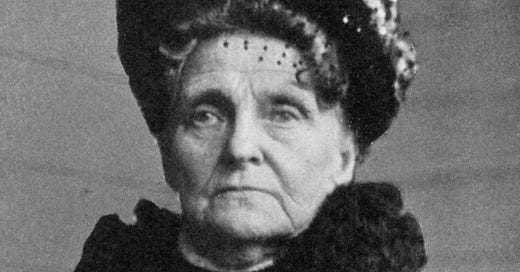One of the greatest investors of all time
Let’s pay homage to Hetty Green (1834-1916). Known as the Queen of Wall Street, it could be said she was one of the greatest investors ever.
Ms. Green turned an inheritance of $6 million received in 1865 – when she was 31 years old – into a fortune tallying more than $100 million by the time of her death in 1916. In current U.S. dollars, that was a net worth greater than $2 billion.
Ms. Green was frequently portrayed on an equal footing with John D. Rockefeller, Andrew Carnegie and other tycoons in the Gilded Era. A difference was that these men achieved their fortunes as businessmen whereas she earned hers as an investor.
Her investment strategy was decidedly contrarian. Or, as she told a reporter: “I buy when things are low and nobody wants them. I keep them until they go up and people are crazy to get them.”
The first coup came after the American Civil War ended in 1865. She acquired the much depreciated “greenbacks” printed by the northern states to pay for war materials and troops. They later recouped their value when Congress passed legislation making them convertible into gold.
Many financial panics occurred in the following decades. Ms. Green always kept a large war chest of cash on hand to buy up real estate, bonds and railway stocks during these sell-offs. She never bought on margin, so she would have staying power whenever the market dipped. Trading on 10-per-cent margins is what got her husband into trouble.
Ms. Green was particularly fond of real estate as an investment. She would watch to see which way a city was developing and buy there, or looked for foreclosures to pick up properties dirt cheap. A lot of her money was loaned out as mortgages.
“Before deciding on an investment, I seek out every kind of information about it,” she said. One story illustrates her diligence. She went to buy a horse and a wagon from a man but first found someone with a grudge against the owner and persuaded him to tell every fault of the horse and rig. Then she used the information to bargain the price down by half.
Then there was the time she was buying several thousand yards of curtain lace and had samples sent to her hotel room. Before sending them back with her order, she spent several hours with a pin, carefully tracing out the pattern of the chosen sample in a cushion. When coarser lace was delivered, she was able to prove the deception and obtain the lace she ordered.
Ms. Green had a passion for business and the acumen to go with it, thanks to her upbringing as an only child in an extended family of entrepreneurs. Her grandfather and father ran a large whaling company and they made sure to involve her in the family business.
From the age of six onwards, she read the financial news to them, discussed business matters, went on business trips, learned to read ledgers and traded commodities. At 15 years old, she became the family’s bookkeeper.
She built up her fortune on her own. Indeed, it could have been a lot larger if she didn’t have to pony up so often for her husband’s misguided financial speculations. They separated for this reason, when she was in her fifties. But she kept in touch and cared for him when he was ill.
In the 19th century, the legal doctrine of coverture specified that a woman’s property belonged to her husband. She could have lost all of her fortune to her husband when the martial breakdown occurred. But a pre-nuptial agreement overruled coverture and her wealth remained in her hands.
During her lifetime, the press was not always kind. Some articles referred to her as the Witch of Wall Street. Another label, The World’s Greatest Miser, was applied because of her frugality.
Her estate was split equally over her two children. They both died childless and nearly all of Ms. Green’s wealth was donated to several dozen colleges, churches, hospitals and charities
Several biographies have been written, including:
Hetty Green: Witch of Wall Street, by Boyden Sparkes and Samuel Taylor Moore
The Richest Woman in America: Hetty Green in the Gilded Age, by Janet Wallach


